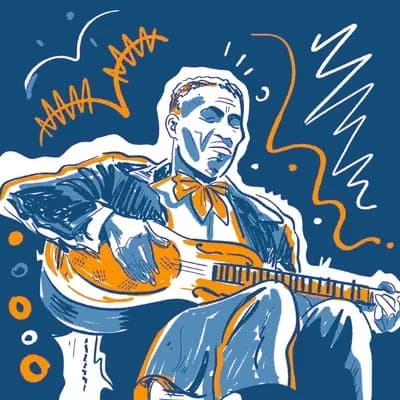
Son House
21 March, 1902 – 19 October, 1988
As a hypnotizing, spirit-conjuring preacher, who happened to tell his sermons through song, with a National in-hand, Son House's booming voice sometimes creates the sensation of the earth-shaking from beneath one's feet. Howlin' Wolf scolded House, saying the only love of his life was whiskey; House corrected him by adding "women" to that score also.
MuseScore tabs
No data found